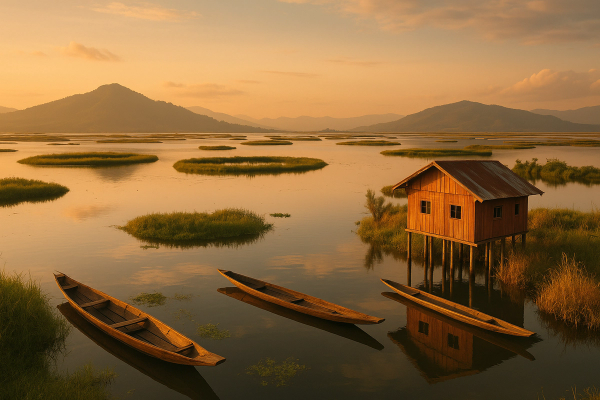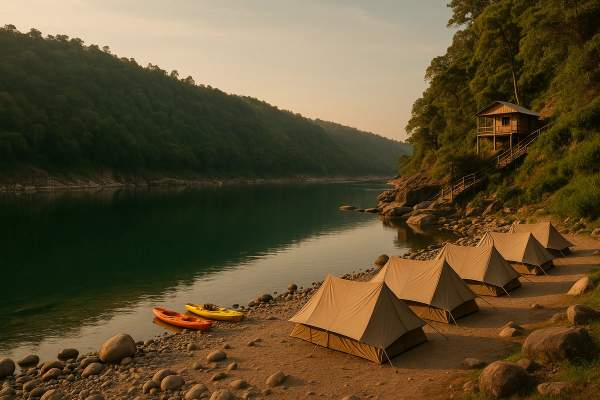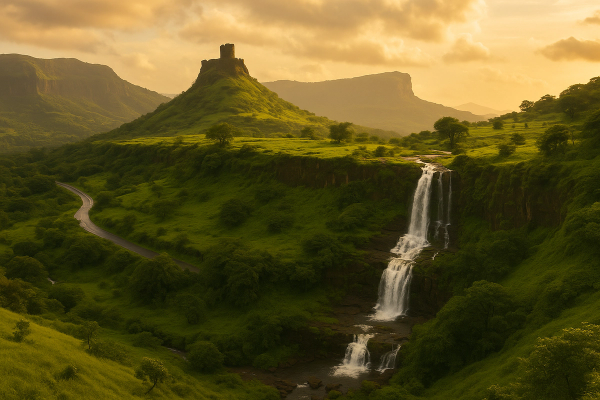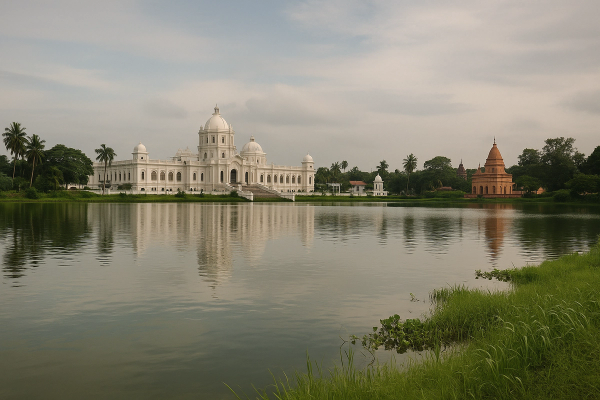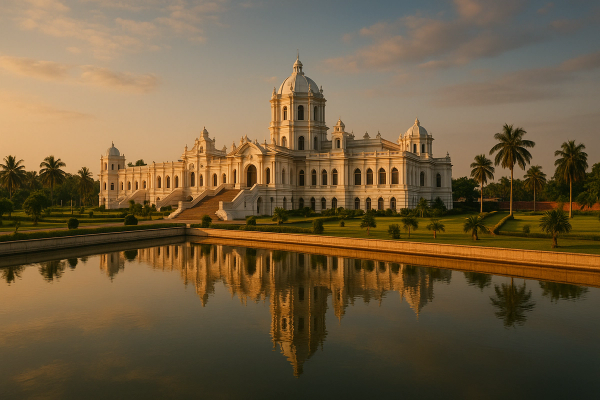
Okay, Let's Talk Sahara: My Morocco 4x4 Desert Adventure Guide#
So, you're thinking about Morocco? And not just Marrakech markets (though those are cool too), but the real deal? Like, sand-dunes-as-far-as-the-eye-can-see, bumpy 4x4 rides, sleeping under a bazillion stars kind of deal? Yeah, you're talking about a Sahara desert tour, probably involving some epic desert camping and a serious 4x4 adventure. Honestly, it's one of those trips that kinda stays with you. I went a while back, and figuring out the logistics for a proper Morocco road trip into the dunes felt... daunting? But it was SO worth it. I learned a ton, messed up a few things (lol), and wanted to share some tips to hopefully make your planning a bit smoother. This isn't your typical polished guide; it's more like notes scribbled down after one too many mint teas, sharing what actually helped.¶
The Sahara Vibe: What's It Really Like?#
First off, the Sahara is HUGE. Like, mind-blowingly massive. Most Morocco trips focus on specific dune areas, usually Erg Chebbi (near Merzouga) or Erg Chigaga (wilder, near M'Hamid). We went to Erg Chebbi, easier to access but still felt incredibly vast. It's not just empty sand, though. There's a deep Berber culture out there, nomadic traditions, oases popping up seemingly out of nowhere... It’s quiet in a way that’s kinda loud, if that makes sense? The silence is intense, especially at night. Forget whatever movie version you have in your head; it's way more profound and, yeah, sandy. Everything gets sandy.¶
When Should You Actually Go?#
Timing is kinda crucial, not gonna lie. You do not want to be dune bashing in August. Trust me.¶
The Sweet Spots: Spring & Fall#
Honestly, aim for Spring (March-May) or Fall (September-November). The weather is chef's kiss. Warm sunny days, cool (but not freezing) nights. Perfect for exploring during the day and cozying up by the campfire at night. Wildflowers can pop up in spring, which is pretty cool against the orange sand.¶
- Pros: Pleasant temps, less extreme conditions, generally gorgeous.
- Cons: Can be peak season, so potentially more people and slightly higher prices (but worth it imo).
Maybe Avoid: Summer & Winter#
Summer (June-August): It's scorching. Like, seriously dangerously hot. Many camps actually close. Unless you really love extreme heat (why tho?), maybe give it a miss.¶
Winter (December-February): Can be surprisingly cold, especially at night. Like, below freezing cold. Daytime can be nice and sunny, but you need proper warm gear for the evenings. Fewer crowds, which is a plus, but be prepared for chilly nights.¶
My two cents? Go in October. The light was amazing, temps were perfect. Felt like we hit the jackpot.
Getting There & That 4x4 Life#
Okay, so reaching the actual Sahara dunes usually involves a bit of a Morocco road trip. Most people start from Marrakech or Fes. It’s a loooong drive, like 8-10 hours depending on the route and stops. You can break it up by stopping in places like Ait Benhaddou (that famous kasbah from Gladiator!), Ouarzazate, or the Dades/Todra Gorges. Highly recommend doing this, makes the journey part of the adventure.¶
Organized Tour vs. Self-Drive 4x4#
This is the big question. We opted for an organized private Sahara desert tour with a driver and 4x4 for the desert part. Why? Honestly, navigating Moroccan roads, especially closer to the desert, seemed stressful. Plus, driving on the dunes? Nah, leave that to the pros. Our driver, Hamid, was amazing – knew all the best photo spots and where to get decent coffee.¶
- Organized Tour: Less hassle, includes driver/guide, accommodation (riad/hotel en route, desert camping), sometimes meals. Great if you want everything sorted. Options range from budget group tours (can feel rushed) to private luxury setups.
- Self-Drive: More freedom and flexibility. Renting a regular car is fine for the main roads, but you'll need a proper 4x4 adventure vehicle if you plan to drive into the dunes yourself (seriously, requires skill) or reach more remote areas like Erg Chigaga. You'd book your own stays and camp. Probably cheaper if you're savvy, but more planning involved.
Side note: If you self-drive to Merzouga/M'Hamid, you can usually arrange the 4x4 transfer and desert camping locally with your riad or an operator there. You don't necessarily have to drive the 4x4 yourself.
Desert Camping: From Basic Tents to Glamping Palaces#
Sleeping in the Sahara is magical. End of story. The desert camping setups vary WILDLY.¶
- Basic Berber Camps: Simple tents (often goat hair, traditional style), shared bathroom facilities (sometimes basic, sometimes surprisingly decent), communal dining tent. Authentic, budget-friendly vibe.
- Luxury Camps ('Glamping'): Proper beds, private en-suite bathrooms (yes, with running water!), fancy furnishings, gourmet food. It's kinda wild how comfy they can make it in the middle of nowhere. Obviously, costs more.
We stayed somewhere in the middle – comfortable tent, decent shared bathrooms, great food and atmosphere. Honestly, the best part is just being out there. The campfire gatherings with Berber music under the stars? Unbeatable. Most Sahara desert tour packages will include a night (or two) at a camp.¶
Tip: Check reviews and photos of the specific camp your tour uses if you book a package. Quality can differ!
Sahara Must-Dos (Besides Just Staring at Sand)#
Okay, so you're in the desert. What do you actually do?¶
- Camel Trekking: It's kinda cliché, but also kinda essential? Riding a camel out to your camp for sunset is iconic. It’s bumpy, maybe slightly uncomfortable after an hour, but the views are insane. (My camel, Abdullah, seemed perpetually unimpressed, btw lol).
- 4x4 Dune Bashing: This is where the 4x4 adventure part kicks in! Driving up, down, and across the massive dunes is a proper thrill ride. Experienced drivers make it look easy; don't try this in a rental unless you really know what you're doing.
- Sandboarding: Basically snowboarding, but on sand, and usually without bindings. You hike up a dune, slide down. More fun (and exhausting) than it sounds. Most camps have boards you can borrow.
- Sunrise & Sunset: Non-negotiable. Climb a tall dune (harder than it looks!) and just watch the light change. The colors are unreal. Bring your camera, obviously.
- Stargazing: Zero light pollution = mind-blowing stars. You'll see the Milky Way like never before. Seriously, just lay back and look up.
- Visiting Nomads/Villages (Responsibly): Some tours offer visits to local Berber families or villages like Khamlia (known for Gnawa music). Be respectful, ask before taking photos, maybe buy a small handicraft if you like something. Don't treat it like a human zoo.
Desert Eats & Drinks#
Food at the desert camps is usually pretty good, surprisingly! Expect traditional Moroccan fare.¶
- Tagine: The classic slow-cooked stew, often chicken or lamb with vegetables and spices. Always hits the spot after a day out.
- Couscous: Often served on Fridays, but sometimes available other days too. Fluffy semolina with veggies and sometimes meat.
- Berber Omelette: Cooked in a tagine pot, often with tomatoes, onions, spices. Simple but tasty.
- Mint Tea: You'll drink gallons of this. Sweet, minty, and the ritual of pouring it is half the fun.
Pro Tip: Pack some snacks for the long drives and maybe some extra water, just in case. While camps provide food and water, having your own stash is never a bad idea.
Practical Stuff Nobody Tells You (Okay, Maybe They Do)#
Budgeting for the Dunes#
Costs vary massively depending on tour type (group vs private), camp luxury level, and duration. A typical 3-day/2-night private tour from Marrakech including transport, driver, accommodation (riad + desert camp), some meals, camel trek might run anywhere from €300 to €600+ per person. Group tours are cheaper, maybe €100-€200. Self-driving could save money, but factor in 4x4 rental (if needed, ~$100+/day?), fuel, accommodation, food, activities. Remember cash for tips (drivers, guides, camp staff appreciate it – maybe 100-200 MAD/day for a good driver?), snacks, souvenirs.¶
Packing Essentials (Learn from my mistakes)#
Layers are key! Also, sand gets EVERYWHERE.¶
- Scarf/Headwear (Tagelmust-style): Essential for sun, wind, and sand. You can buy one easily there. Seriously, don't skip this.
- Sunglasses: Obvious, but crucial.
- Sunscreen: High SPF. The sun is intense.
- Comfortable Closed-Toe Shoes: For walking on sand and potential critters (though rare).
- Warm Layers: Fleece, jacket, hat, gloves, warm socks, especially for evenings/nights (even outside winter).
- Loose, Lightweight Clothing: For daytime comfort.
- Torch/Headlamp: Essential for navigating the camp at night.
- Power Bank: Charging facilities can be limited/slow at camps.
- Wet Wipes/Hand Sanitizer: For feeling slightly less dusty.
What I forgot? Extra camera batteries. Died right at the best part of sunrise. Rookie mistake. 🤦♀️
Safety & Culture Bits#
The desert areas linked to tours are generally safe. Your biggest concerns are the environment (heat, sun) and maybe petty theft in busier towns en route (just be aware). Driving standards can be... different. Hence why having a local driver for your Morocco road trip is often less stressful. Culturally, dress modestly outside tourist hotspots (cover shoulders/knees). Ask before taking photos of people. Learn a few words of Arabic/Berber ('Shukran' for thank you goes a long way).¶
A Typical 3-Day Sahara Itinerary (Rough Idea)#
Most classic Sahara desert tours follow a similar pattern, usually a loop from Marrakech or a route between Marrakech and Fes. Here’s a very rough sketch:¶
- Day 1: Marrakech -> Atlas Mountains -> Ait Benhaddou -> Dades Valley/Ouarzazate. Long driving day, but stunning scenery. Crossing the Tizi n'Tichka pass, visiting the famous kasbah, ending in a hotel/riad in the Dades Gorge area or Ouarzazate. This is the Morocco road trip part.
- Day 2: Dades Valley -> Todra Gorge -> Merzouga (Erg Chebbi). More cool gorges, then the landscape starts changing. Arrive near Merzouga in the afternoon. Swap car for camel (or 4x4 transfer) to reach your desert camping spot deep in the dunes. Sunset camel trek, dinner, campfire, stars.
- Day 3: Merzouga -> Ziz Valley -> Midelt -> Azrou (Cedar Forest) -> Fes OR back to Marrakech. Early start for sunrise! Breakfast at camp. Camel trek back out. Then another long driving day, either heading north to Fes (passing through Ziz Valley, maybe seeing monkeys near Azrou) or taking a different route back south to Marrakech (often via Nkob, Draa Valley). The drive is long, be prepared.
Honestly, if you have more time, add a day! Spend two nights desert camping, or break up the return journey more. Three days feels a bit rushed with all that driving.
Travel Kindly: Being a Good Desert Guest#
The desert is beautiful but fragile. Please be mindful.¶
- Leave No Trace: Pack out everything you pack in. Don't leave litter, not even organic stuff.
- Water Conservation: Water is precious. Use it sparingly.
- Support Locals: Choose reputable tour operators who employ local Berber guides and staff. Buy authentic handicrafts directly from artisans if you can.
- Respect Culture: Dress modestly, ask permission for photos, be polite and open.
- Camel Welfare: Choose operators who seem to treat their camels well (healthy appearance, not overworked).
So, Is a Sahara 4x4 Adventure Worth It?#
Uh, YES. Absolutely. It’s dusty, the drives are long, you might get saddle sore from the camel... but the experience is genuinely unforgettable. That feeling of being surrounded by nothing but endless waves of sand, the silence, the stars... it’s something else. It’s more than just a tick on a bucket list; it’s a proper 4x4 adventure and a chance to disconnect and see a completely different way of life.¶
My biggest takeaway? Don't overschedule. Allow time to just be there. Soak it in. Climb a dune and sit. Watch the dung beetles bumble around. Talk to your guide. It's those quiet moments that stick with you just as much as the thrilling 4x4 adventure rides.¶
Planning a Sahara desert tour as part of your Morocco road trip might seem complex, but hopefully these tips help break it down. Go for it! You won't regret it. Have you done a desert camping trip in Morocco? Got any other tips? Drop 'em in the comments! And if you found this useful, maybe save it for your planning? Safe travels!¶




